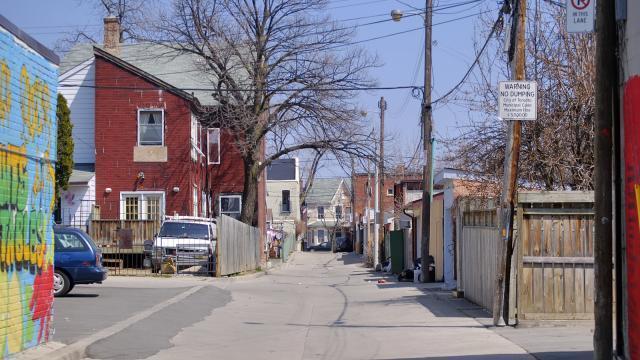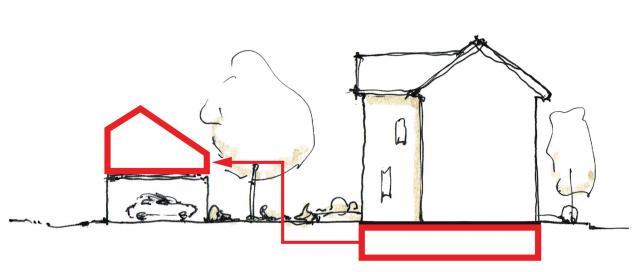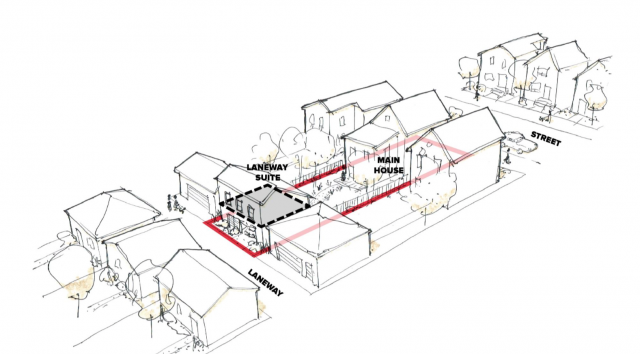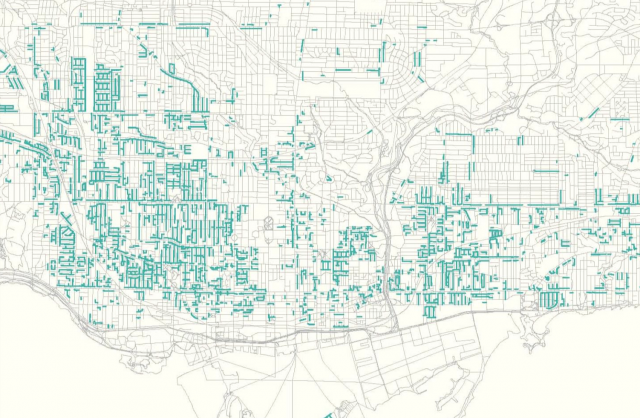
Changing Lanes: What Will Laneway Suites Mean for Toronto?
Urbantoronto.ca
June 12, 2018
Stefan Novakovic
Laneway housing may finally be coming to Toronto. Last week, a Toronto East York Community Council (TEYCC) meeting cleared the way for City Council to approve a long-awaited policy to allow secondary residential units in the city's car-dominated back lanes. Spanning thousands of kilometres, there are over 2,400 such laneways across Toronto, many of which are quietly tucked behind some of our leafiest and most desirable streets. Now, they are one step closer to being unlocked.
June 6th's TEYCC vote advanced a Planning Department framework dubbed "Changing Lanes," which outlines the City's strategy for allowing new development. The plan would allow back lanes across the old City of Toronto to be redeveloped with one- and two-storey homes, which would remain legally tied to their host properties. Drawing utilities via the homes in front of them, the small secondary suites--which would be relatively constricted in size and suite configuration--could serve as rental units or so-called "granny suites."
 Typical residential laneway in Little Portugal, image by edk7 via Flickr.
Typical residential laneway in Little Portugal, image by edk7 via Flickr.
The idea has obvious appeal. Amidst an unprecedented affordability crisis, the infusion of new housing supply is welcome, while the redistribution of spatially inefficient vehicle space -- most laneways are occupied by garages -- into homes offers additional density with little palpable impact on neighbourhood built form. While site assembly, land costs, and outdated zoning make widespread mid-rise and "missing middle" development difficult, the creation of laneway housing presents a rare opportunity for incremental density. In a city increasingly defined by the stark and sometimes jarring transitions between high-rise point towers and single-family homes, that's important.
 A laneway suite can be thought of as analogous to a basement apartment, illustration by Lanescape
A laneway suite can be thought of as analogous to a basement apartment, illustration by Lanescape
It takes little more than a few words with a neighbour -- or, if you have the constitution for it, a community development meeting -- to learn that new development is often contested in Toronto. However, the implementation of a laneway home policy has relatively strong public support. In extensive consultations undertaken by the City (together with Lanescape and Evergreen), a cautiously positive outlook emerged. The perceived sanctity of parking aside, many Torontonians seem to appreciate the potential of modest density. Meanwhile, the lack of provision for severances in the "Changing Lanes" policy also mean that individual homeowners get to expand their property -- and its value. Complaints about new density and development are more seldom heard when neighbourhood homeowners are also the developers.
 A graphic explains the nature of a laneway home, image via Evergreen Canada
A graphic explains the nature of a laneway home, image via Evergreen Canada
Despite the public support, taking any space away from cars remains frustratingly difficult in Toronto politics. Widely celebrated by urbanists, the TEYCC vote was hardly a foregone conclusion, especially considering an earlier version of a laneway plan was quickly struck down by Council in 2006. 12 years ago, concerns about cars, servicing, privacy, and neighbourhood character carried the day. Now, the balance has finally shifted.
So what will it all mean?
According to the Planning Department's estimates, "there may be as few as 100 or as many as 300 laneway suites constructed in each year following the implementation of these guidelines." Considering the scope of Toronto's population growth and housing demand, it's unlikely to make a big difference. It's still the right thing to do.
 A map showing many of Toronto's 2,400+ laneways, image via The Laneway Project
A map showing many of Toronto's 2,400+ laneways, image via The Laneway Project
Laneway housing will not solve or meaningfully ameliorate the housing crisis, but it could help foster new ways of seeing the city. Towers rise, but Toronto's low-rise neighbourhoods are continuing to depopulate through "overhousing" and prohibitive land costs. The density of neighbourhoods like The Annex and Riverdale isn't merely contingent on development and built form, but also on how we use what's already here. There's more space left than meets the eye, and a latent capacity for density is embedded within the city's existing urban fabric. As back lanes come to the forefront, we might learn to see a garage for a potential home, and a car for a waste of space.
